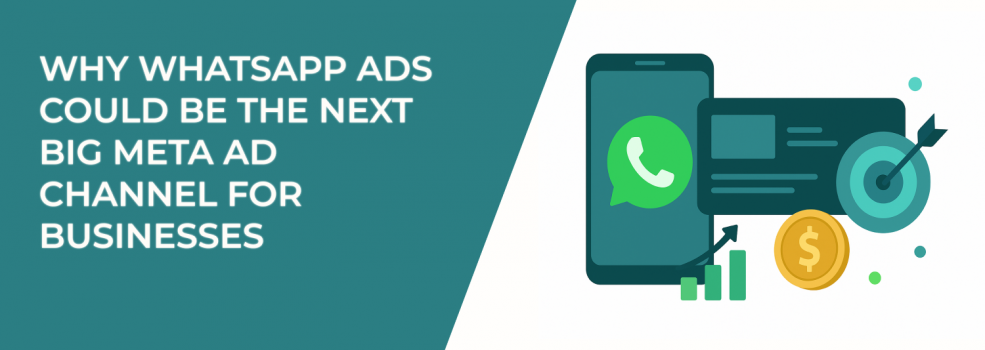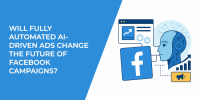Meta is reshaping how ads work — not by asking users for more data, but by listening to what they say. With the rollout of its AI-powered chat assistant in platforms like WhatsApp, Meta has started capturing real-time user intent in a completely new way. And even though these chats happen in WhatsApp, the targeting impact will likely ripple across Facebook and Instagram ad campaigns.
So what does this mean for advertisers and marketers? In short — better insights, different signals, and new rules for how you craft and deliver campaigns.
What Is AI Chat-Based Ad Targeting?
Meta’s new chatbot allows users to ask questions and get answers about everything from products to services and events. These aren’t private user-to-user conversations — they’re interactions with Meta’s AI assistant, and Meta can use this data to refine ad targeting.
If someone asks, “Best running shoes for flat feet?” or “Affordable wedding venues nearby,” they’re revealing more than just interest — they’re showing specific, time-sensitive intent. Meta can use those insights to target ads more accurately across its platforms — including Facebook.
That means your Facebook ad campaigns could start reaching people based not just on what they like, but on what they’ve asked about.
Why This Changes Facebook Campaign Targeting
Even though the chat feature is native to WhatsApp, the data won’t stay there. Meta’s ad network spans all its apps — and that includes Facebook Ads Manager. So, the AI-generated insights from one platform can improve targeting performance across others.
Here's what changes for your Facebook strategy:
-
Wider yet smarter reach — You may find Facebook’s ad delivery system reaching people outside your traditional interest targeting, thanks to signals pulled from AI chat conversations.
-
More reliance on inferred intent — You might notice performance shifts without changing anything in your audience setup. The algorithm may be finding newly qualified leads based on unseen chat interactions.
-
Higher importance of ad clarity — The algorithm may send your ad to the right person, but if the copy doesn’t match their intent, you lose the opportunity.
To compete in this new landscape, marketers will need to go beyond standard demographic filters. It’s time to align messaging with real questions and real needs.
What You Should Do as an Advertiser
If you want your Facebook campaigns to stay effective — or get better — you need to adjust how you build and test them. Meta’s smarter data doesn't replace your role as a marketer. It just raises the bar.
Let’s go deeper into what you can do.
1. Use More Intent-Based Language in Your Ads
Your ads need to reflect how people talk when they’re searching or asking for something.
Try to include:
-
Clear product benefits that solve specific problems.
-
Keywords and phrasing that mirror everyday language.
-
Questions in headlines, like: “Need a new laptop for school?”
This style of copy lines up with what Meta’s AI is picking up in chat conversations — giving your ads a better shot at landing with the right audience. Need help writing ad copy that gets noticed? Here’s how to craft compelling Facebook ads that convert.
2. Test Broad Audiences More Often
Instead of stacking 10+ detailed interests, try running broader audience ad sets and letting the AI handle the refinement. This aligns with current algorithm trends and gives Meta more room to match your ad with new, high-intent users.
A great place to start is by reviewing how to layer detailed targeting with clear messaging instead of over-narrowing your reach.
3. Design Creatives That Feel Like Conversations
Since ad delivery is influenced by actual chat behavior, your visuals and messaging should feel conversational too. This means:
-
Use natural tone and rhythm in copy.
-
Avoid loud sales language; make it sound like a helpful suggestion.
-
Structure carousel ads to mimic problem-solution flows.
If you’re not sure how to adapt your creative, The Ultimate Guide to Facebook Ad Formats breaks down which types perform best in different funnel stages.
4. Focus on Real-Time and Short-Term Intent
If someone is actively asking about “summer shoes,” don’t show them your winter boots. Your campaigns need to respond to now, not last season’s search history.
Test ads that include:
-
Timely offers, flash sales, or location-based relevance.
-
Seasonal product mentions and updated creative.
-
Urgent or benefit-focused calls-to-action.
Need help aligning campaign timing with ad delivery? This guide to Facebook Ads Targeting Updates can show you what’s changed and how to stay ahead.
5. Watch for Unexpected Performance Changes
Meta isn’t announcing when and how chat-based insights start influencing delivery — but you’ll notice.
Keep an eye out for:
-
Sudden improvement in broad campaigns.
-
Lower cost-per-click on audiences with minimal interest filtering.
-
New audience segments converting that weren’t part of your original targeting logic.
If you see changes, dig into performance by reviewing your campaign breakdowns. If you don’t adapt your strategy, you might end up running a solid campaign — but still missing the mark.
To avoid that, learn why some ad sets may deliver zero impressions — and how to fix it fast.
Looking Ahead
AI chat-based targeting isn’t about more data — it’s about smarter data. Conversations with Meta’s assistant will become one of the most valuable sources of user intent across the platform. If Facebook advertising felt like guesswork before, now you’re working with a clearer map — but only if your creative and strategy are aligned.
The advertisers who win in this new model won’t necessarily be the loudest or the biggest spenders. They’ll be the ones who:
-
Ask better questions in their messaging.
-
Focus more on intent than interests.
-
Let AI handle the complexity — and focus their energy on clear, helpful, relevant ads.
Meta’s targeting tools are evolving — are your ads ready to evolve with them? Don’t just adjust your audience filters. Rethink how you speak to people. Because now, Meta is listening.

